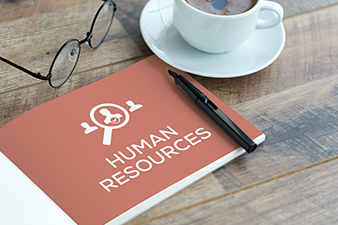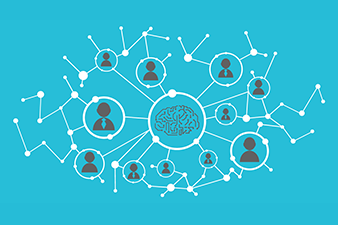
COVID-19 has been an unprecedented challenge in the modern business world that has upended the normal course of business globally. Actions taken to combat the virus on a global level, including social distancing, vaccination and mask mandates, and idling of major facets of the economy, have disrupted the typical flow of everyday life and work for people around the world.
Just like life outside of the workplace has been disrupted, the disruption for employees has been very real. This unexpected event has wreaked havoc on the employee life cycle that many organizations have made strides to positively impact over recent years.
The pandemic has forced HR leaders to reinvent their HR strategies and focus on managing the critical touchpoints employees have within their organizations.

Understanding the impact of the pandemic on the employee life cycle allows leaders of organizations to make sure their employees are receiving the best experience possible—now and into the new normal, after the initial COVID-19 response dissipates.
Leveraging critical inflection points across each phase of the employee life cycle will enable organizations to go from reacting to unexpected disruptions to leading their employees through it. Although COVID-19 is very real for us now, unexpected disruptions in the business environment are nothing new.
The following sections highlight priorities your organization should be focusing on in each stage of the employee life cycle during and after unprecedented events.
Positioning the Employee Life Cycle to Lead Your Workforce into the Future
1. AttractingIn the Attracting phase, your organization is trying to cultivate a positive experience for potential candidates. This phase is unique in that efforts are fully committed on people who are not yet employees of the organization. Companies rely on their organizational brand to help attract potential candidates in this phase. What once worked prior to the unexpected event of COVID-19 may not have the same positive impact it once had. When focusing on the Attracting phase, consider the following:
|
|
2. OnboardingIn the Onboarding phase, your organization should be laser focused on helping new hires adjust as quickly as possible to their role within the company. The adjustment period includes how quickly the employee learns expectations of their role, the knowledge skills and abilities required of them to be successful, organization values, and attitude and norms that help drive the culture of your organization. The faster employees feel included in the organization, welcomed to their teams, and prepared for their future work, the faster they will be able to make a positive impact and drive the organization forward. When focusing on the Onboarding phase, consider the following:
|
|
3. RewardingIn the Rewarding phase, your organization should be focused on recognizing and retaining your talent. Foster a positive culture through rewarding employees who not only perform exceptional but also are stewards of company values. Recognizing employees who lead by example can help strengthen the culture of the organization. Timely recognition can heighten engagement and also lead to increased retention. When focusing on the Rewarding phase, consider the following:
|
|
4. DevelopingIn the Developing phase, your organization aims to manage the professional development of its employees. By developing employees professionally, organizations help build the skills of the employees to positively impact the organization, while providing them a best-fit career path within the organization to help retain critical talent. The ability to ensure employees are inherently satisfied and continually challenged breeds strong retention along with organizational growth. When focusing on the Developing phase, consider the following:
|
|
5. TransitioningIn the Transitioning phase, much like trying to manage the disruption of an unexpected event, your organization is focused on managing the disruption of an employee leaving the organization. In the last stage of the life cycle, an individual can leave the organization for many reasons—new job with another organization, retirement, new employment, involuntary termination, and others. When an employee leaves a company, this can affect other employees and teams, as well as impact the performance of work. When focusing on the Transitioning phase, consider the following:
|
While organizations across the globe are trying to mitigate the impact of such an unprecedented pandemic, they need to ensure they are driving organizational change by optimizing their employee life cycle. Tapping into your organization’s most powerful resource—talent—can be a key step in accelerating not only stabilization but also growth through this crisis.
How ScottMadden Can Help
ScottMadden has worked extensively with leading national organizations. Partnering with clients to develop, implement, and enhance across multiple industries has allowed us to help you quickly respond and adapt in this ever-changing environment—today and into the future. Learn more about our human capital management services and ensure your success under the most pressing circumstances.
Additional Contributing Author: Bryan Kloss









































